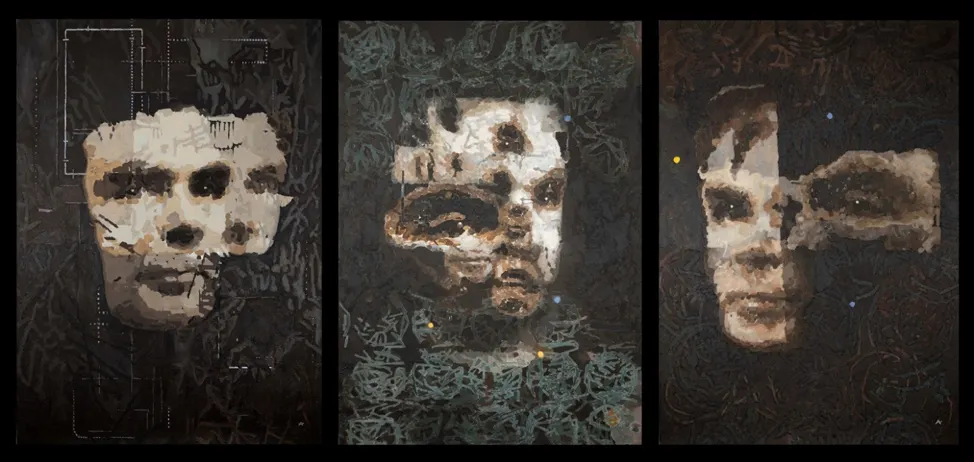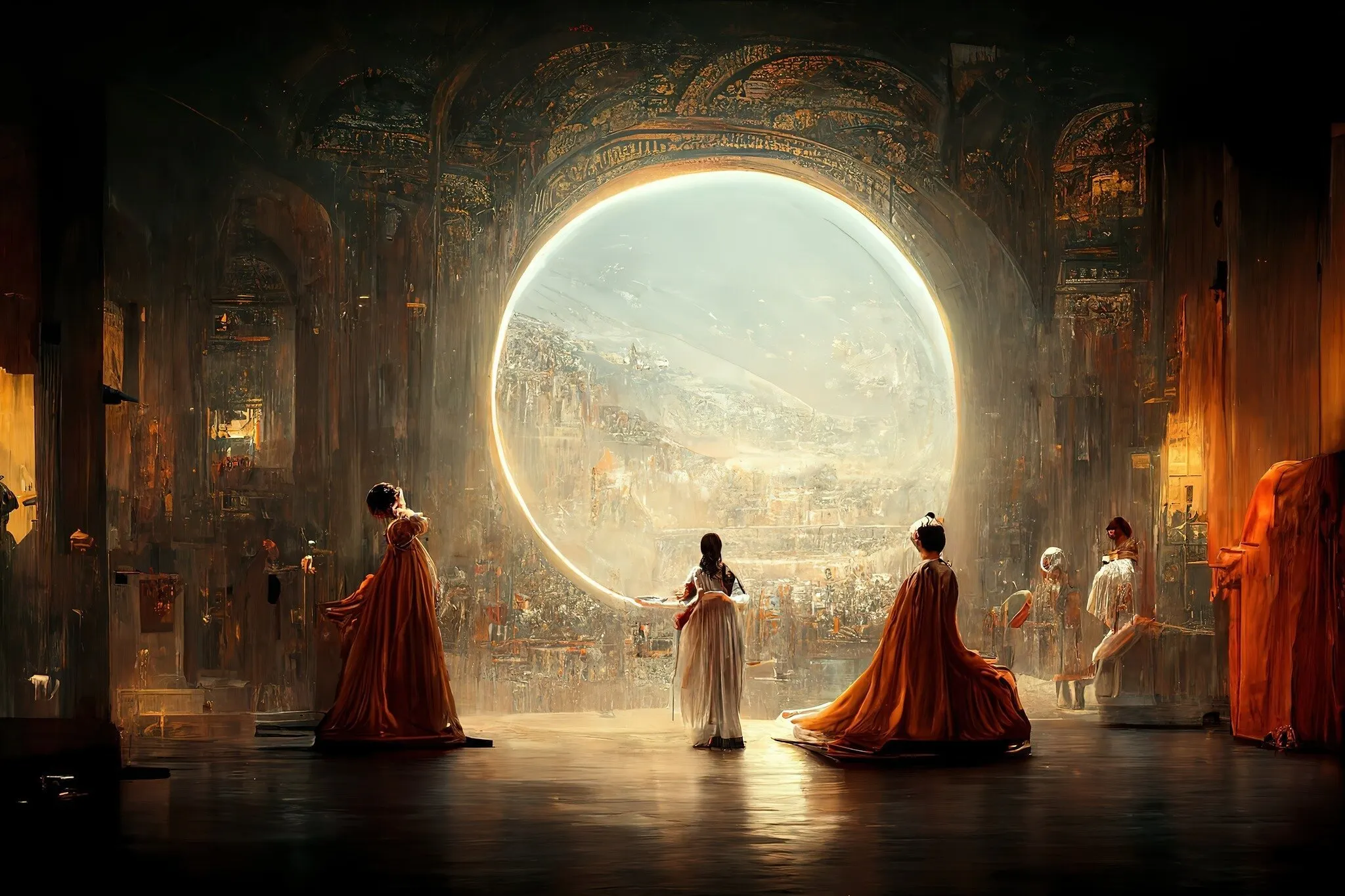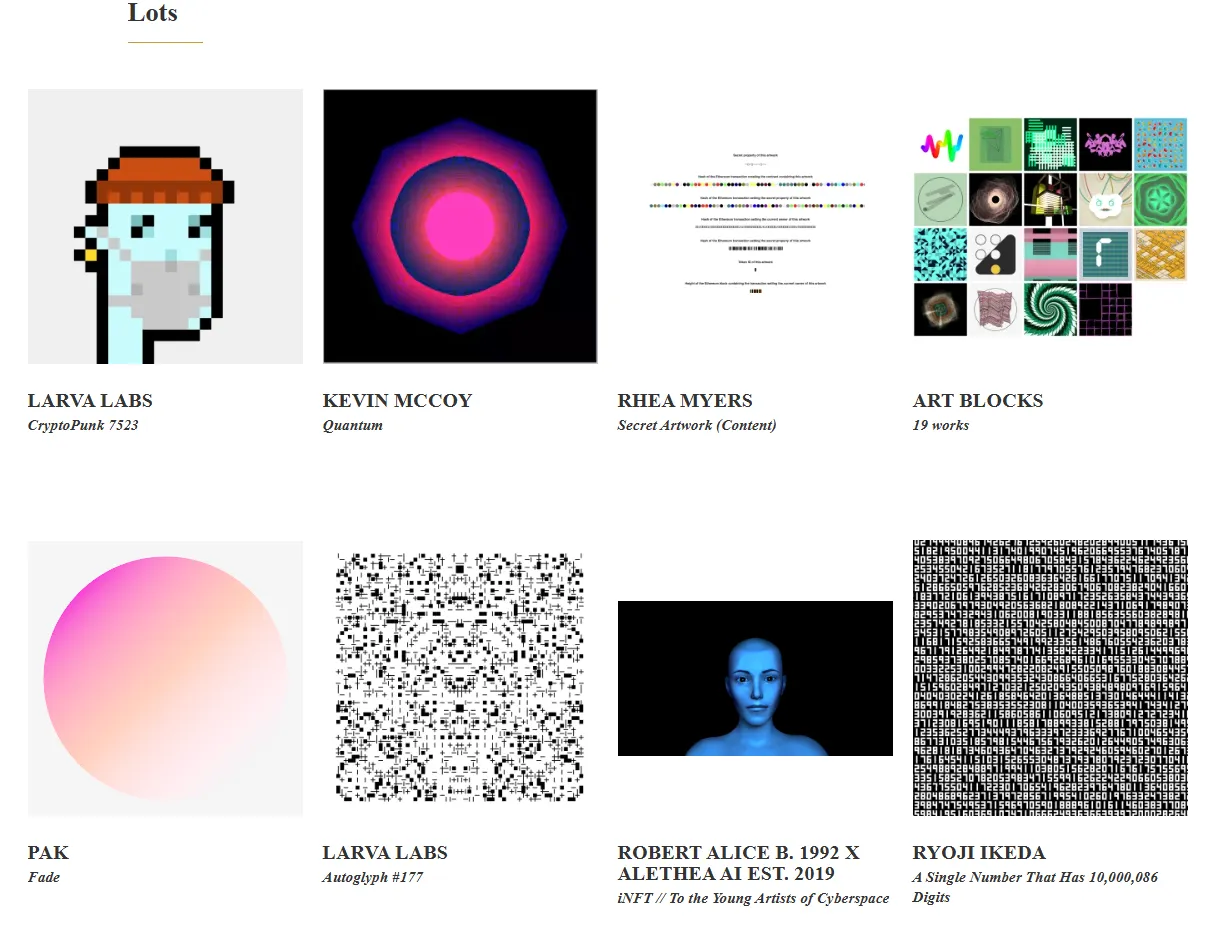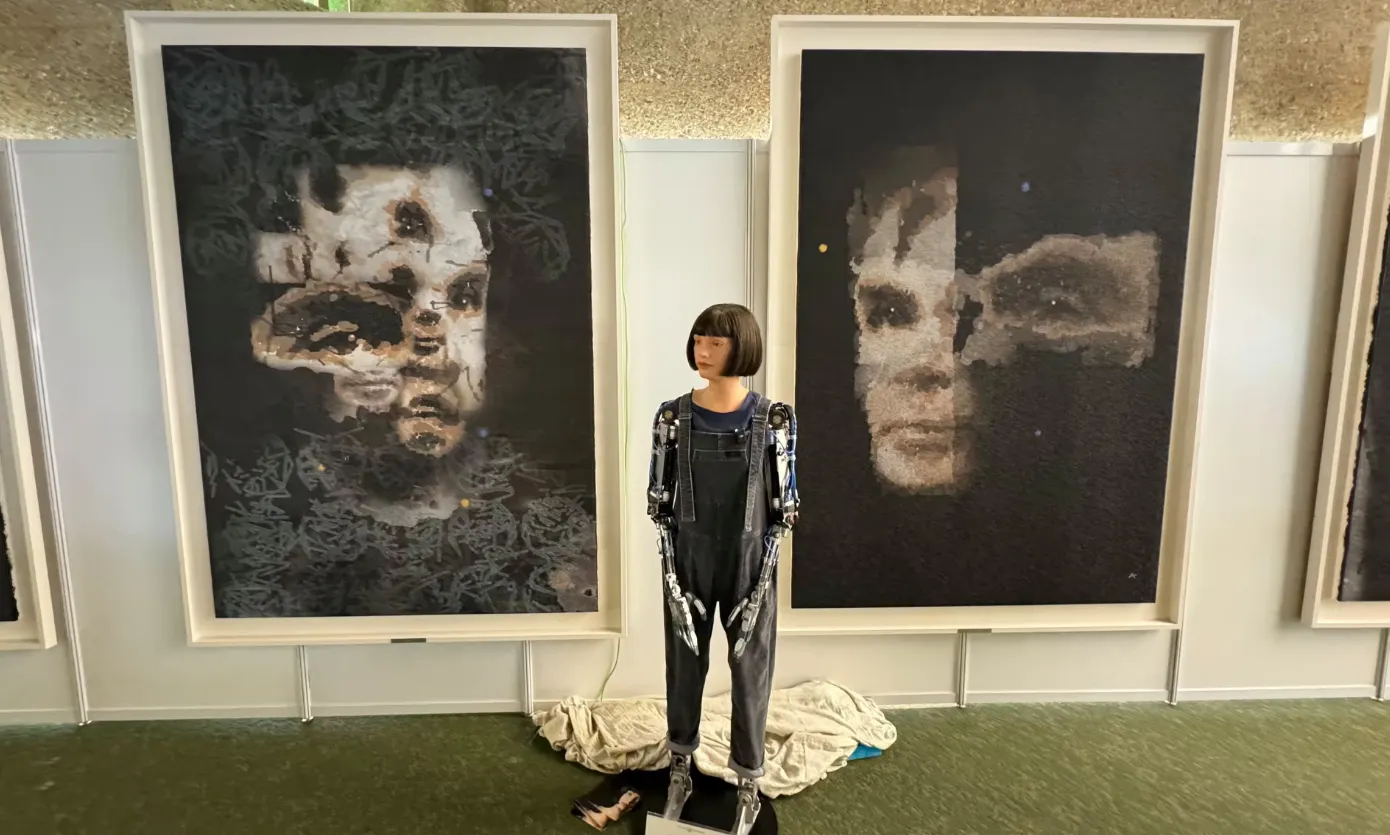A portrait of computer science pioneer Alan Turing by humanoid robot artist Ai-Da sold for $1.08 million at Sotheby's, marking another milestone in AI art's rapid market ascent. The sale price exceeded pre-auction estimates building on momentum from previous AI art breakthroughs.
The price nearly 10-X’d earlier predictions, which assumed that the piece wouldn’t top $180,000 at auction.
Michael Bouhanna, Sotheby's head of digital art, told Decrypt the timing reflected an emerging trend especially among younger people. "The combination of art and technology is gaining more interest," he said, "particularly among a younger generation of collectors."

The 2.2-meter (7.5-foot) portrait titled "A.I. God" drew 27 competitive bids in Thursday's online sale, Sotheby’s said. The work depicts Turing, known as the father of artificial intelligence, and seems to be inspired by the works of Pablo Picasso and Doris Salcedo—according to Sotheby’s.
This sale follows a trajectory of AI art gaining institutional recognition, a trend that probably gained notoriety when Jason Michael Allen's MidJourney-generated "Théâtre D'opéra Spatial" won the Colorado State Fair's digital art category in the middle of the AI boom in 2022.
Allen's piece, which required 624 text prompts and a lot of post-processing in Photoshop, sold for $750—a fraction of Ai-Da's achievement.

But as controversial as it is, many artists are already embracing generative AI. From big names like Refik Anadol’s Machine Hallucinnations to the works of amateur enthusiasts like Terrance Washington’s “Country Woman” the fusion of human creativity and machine learning seems to be more intertwined.
And this is exactly the message Ai-Da wanted to deliver with its artwork: Humans should reflect about the role of AI in the future of human society. "AI God’s Alan Turing dissolving portrait reflects the transition from Human agency towards a posthuman world where algorithms make many of the decisions and Technology's influence is pervasive and integrated," said Ai-Da Robot, which uses advanced LLMs to communicate.
The ultra-realistic humanoid artist's creation comes amid growing cultural impact of AI creativity, from chatbots developing devoted followings, establishing relationships with human beings to autonomous AI systems displaying emergent proto cultural behaviors in controlled experiments with minimum interference.
And AI bots have proven very capable of making money all by themselves—not just by making art. Most recently, an AI chatbot called Terminal of Truths generated enough social media influence to propel a cryptocurrency, Goatseus Maximus, into the top 100 digital assets by market capitalization, surpassing established tokens like IOTA and Zcash.
"The key value of my work is its capacity to serve as a catalyst for dialogue about emerging technologies," said Ai-Da Robot, which uses advanced AI language models to communicate. The ultra-realistic humanoid artist, named after computing pioneer Ada Lovelace, generated the concept through studio discussions before using camera-equipped eyes to create the painting.
The sale represents a pivotal moment for the $65 billion global art market, even as the artistic community grapples with AI's implications. Major online art forums have banned AI-generated works, with some communities going so far as to exclude human artists whose style resembles AI outputs, so a fully AI-generated artwork being sold by a prestigious auction house is an important endorsement for generative AI advocates.
Sotheby's launched its Digital Art Department back in 2021, generating over $200 million in sales since its first operations. Many of these sales have included emerging technologies like NFTs and AI-assisted/generated artworks. Its curated list of digital art includes works from prominent digital artists like Rhea Myers, Pak, and the DJ Don Diablo.

Ai-Da's "AI God" portrait was displayed at the UN's 2024 AI for Good Global Summit. The robot artist spent up to eight hours completing each of the 15 paintings in the collection, using fragmented imagery to comment on society's algorithmic transition.
Turing, who helped crack Nazi Germany's Enigma code during World War II, warned about AI's implications in the 1950s. The portrait's style appears to reference these concerns, with patterns resembling the theoretical computer he designed visible in the background.
Cuba Elliott, a curator specializing in artificial intelligence in creative industries, noted to Decrypt that while AI art auctions aren't new, Ai-Da's humanoid approach "helps to further broaden the definition of AI art."
